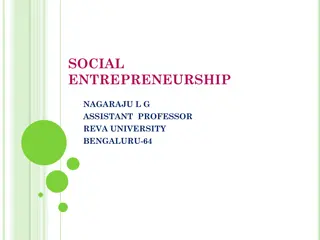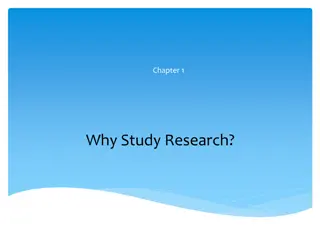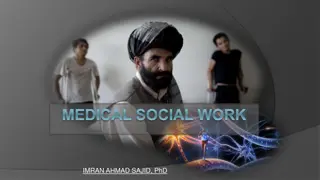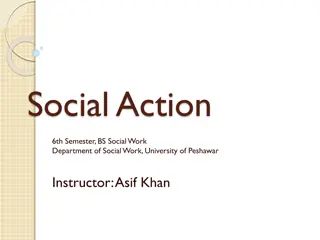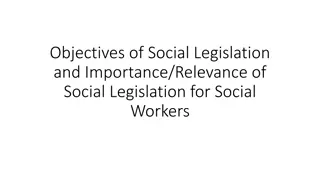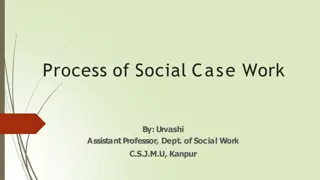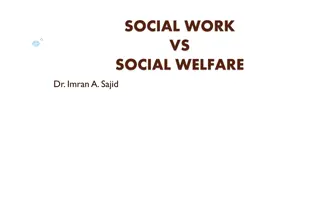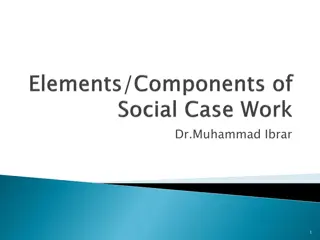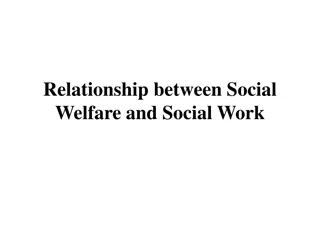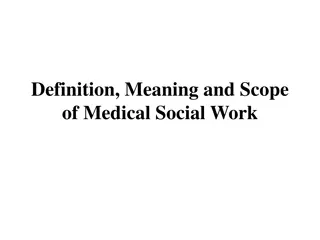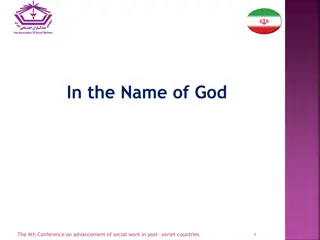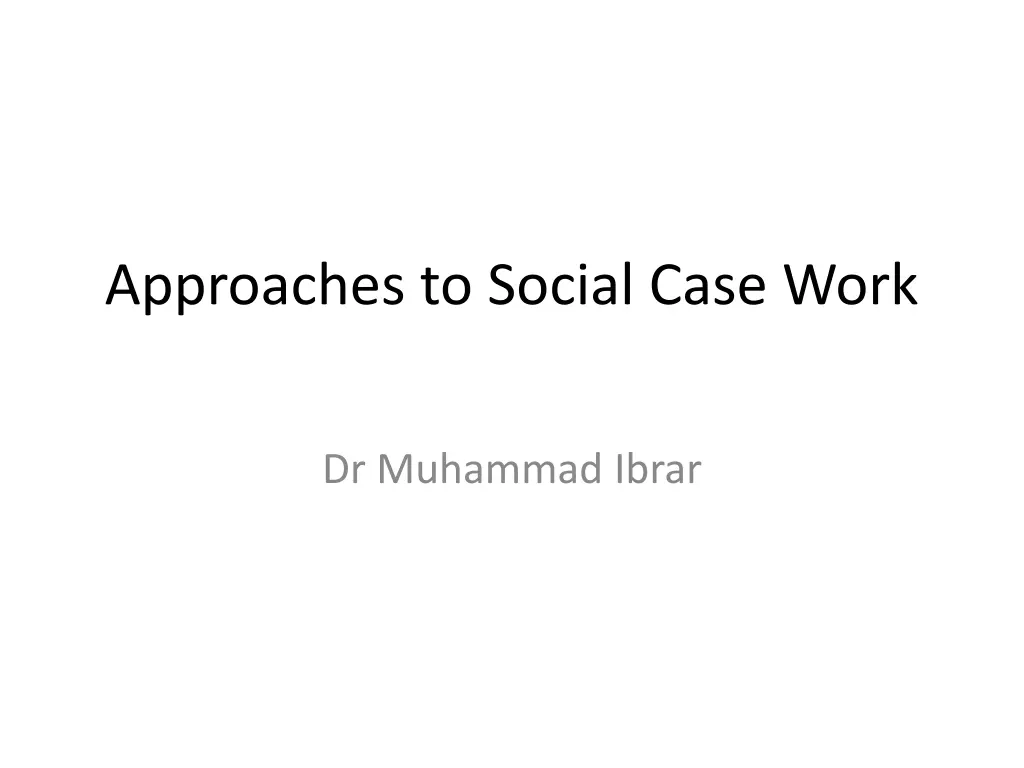
Approaches to Social Case Work by Dr. Muhammad Ibrar
"Explore the Task-Centered Approach to social case work, focusing on brief and time-limited interventions tailored to specific client problems in areas like family relations, social role performance, and resource securing. Learn about assessment, case planning, and implementation stages in this model designed to address clients' identified needs effectively."
Download Presentation

Please find below an Image/Link to download the presentation.
The content on the website is provided AS IS for your information and personal use only. It may not be sold, licensed, or shared on other websites without obtaining consent from the author. If you encounter any issues during the download, it is possible that the publisher has removed the file from their server.
You are allowed to download the files provided on this website for personal or commercial use, subject to the condition that they are used lawfully. All files are the property of their respective owners.
The content on the website is provided AS IS for your information and personal use only. It may not be sold, licensed, or shared on other websites without obtaining consent from the author.
E N D
Presentation Transcript
Approaches to Social Case Work Dr Muhammad Ibrar
1. Task Centered Approach/Model Task-centered approach/model: A technology to alleviate specific target problems perceived by clients, i.e., specific problems they recognize, understand, acknowledge, and want to attend to. (Laura Epstein and William J. Reid)
Characteristics of Approach 1. Brief and time limited; 2. Interventions concentrated on alleviating specific problems Client and Social Worker (SW) agree to work on; and 3. Work on Client s problem revolves around tasks Client agrees to do.
Main Target Areas 1. Improving family and interpersonal relations 2. Enhancing social role performance; 3. Effecting social transition; 4. Securing resources; and 5. Relieving emotional distress reactive to situation factors.
Features of the Approach/Model 1. Assessment 2. Case Planning 3. Implementation 4. Tasks
1. Assessment This consists of finding out the problem. The Social Worker/Practitioner also identifies the influential conditions in the environment, the problem context and takes note of the client s special traits, talents, abilities and problem behaviors.
2. Case Planning General strategy for case plan consists of assessment and a problem-reduction program of action. The focus is on client target problems. The Social constructs a program by making judgments about what can be expected to reduce the problem. Worker/Practitioner
3. Implementation Contract states firm goals, problems, and tasks of Client and Social Worker but with room for flexibility to adjust to changes. Social Worker provides Client with or negotiates resources, instructs him in social skills, negotiates resources and favorable attitudes, reviews progress, and arranges to terminate, extend, or monitor original contract.
4. Tasks State what the client is to do. A task may state a general direction for the clients action, but general tasks are broken down into more specific tasks. Social Worker as agency representative must remain committed to help Client
2. Psycho-Social Approach The psychosocial approach looks at individuals in the context of the combined influence that psychological factors and the surrounding social environment have on their physical and mental wellness and their ability to function. Therefore a change in one part of the system will result in changes in other parts of the system. The psychosocial approach is a unique practice model that originated early in the profession's history. Its goals are to restore, maintain, and enhance the personal and social functioning of individuals.
Contd. This is associated with the Freudian theory of personality and was often referred to as the organismic approach and the diagnostic school of thought . Treatment must be differentiated according to the client s need, Differential treatment approach this requires the worker to understand the client s need and to respond accordingly. hence, the term
Contd. Help provided is a process which will enable change to occur in the person or in the situation, or both.
3. The problem-solving approach The critical principle underlying this approach is that deficiencies in an individuals problem-solving abilities are due to a lack of motivation capacity and opportunity. The assumptions essential the problem-solving approach are: a. All human-living is a problem-solving process b. The process of problem solving relies on the use of such ego functions as perception, cognition, memory, impulse judgment. (desires) control and
Contd. Problem-solving casework involves the four P's: 1) Person= A product in the process of becoming (an open-ended system that reacts and interacts continuously with the environment) 2) Problem= A problem causes discomfort. It arises from a person to person or a person to task relationship. 3) Place= The agency(Function,service and area of concern) 4) Process= Stimulating and supporting a clients exercise of ego functioning



